Car repair is one of those businesses where we’ve learned to be leery. We’ve all heard stories about a “friend of a friend” who took their vehicle in for service, only to find the car in worse shape than when they brought it in. The car wasn’t fixed. Poor quality parts were used. And the problems surmounted as they drove.
How do you know who to trust?
Do you trust the big names, the car repair shops with a station in every city? Or do you trust small businesses, car repair shops that are owned by individuals – families – who you regularly see as you drive to work each day?
Keep in mind that most mechanics are honest, hardworking people that try their best to point out potential problems, and give you information you can use to make an informed decision about the work that needs to be done to your car.
Yet occasionally, you may find one that is less than trustworthy. You can feel it in your gut just by the way they talk. What can you do?
Start with good communication
Remember playing the game telephone you played as a child? As you sat in a circle, the first person would come up with a phrase and whisper it into the ear of the person sitting next to them. You’d have one chance to hear it, before you’d pass it to the person next to you. It moved on from person to person, until the last person had to say it out loud. Rarely was that phrase anywhere near what the original phrase was.
That holds true in other areas of life. You might think one thing, but the person in front of you might hear something else.
If you brought your car in because it made a noise, could the mechanic recreate it? Did they truly understand where you experienced the noise? Were you hearing the same thing?
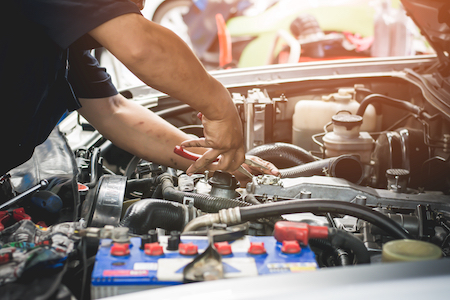 This is just one of the many reasons why it’s important to develop a relationship with a local mechanic. If you bring your car in regularly, the people on staff get to know your vehicle. They make suggestions to keep it running well, they keep notes on items to watch for, and understand the history of a problem just by seeing it over time. You can also develop a rapport with the staff, learning ways to communicate potential problems, in a language you both understand.
This is just one of the many reasons why it’s important to develop a relationship with a local mechanic. If you bring your car in regularly, the people on staff get to know your vehicle. They make suggestions to keep it running well, they keep notes on items to watch for, and understand the history of a problem just by seeing it over time. You can also develop a rapport with the staff, learning ways to communicate potential problems, in a language you both understand.
This works in both directions. Let’s say you bring your car in for a potential problem with the braking system. You feel something at times when you apply pressure to the brake pedal. It might not be a problem with the brakes; it may be your ABS at work. But if a mechanic doesn’t relay this to you effectively, you may feel miscommunicated to, that there’s a problem with trust.
Listen to the way they speak to you
There’s more to good communication than just listening to what each other has to say. It also has to do with trust. Can you trust the car repair shop to tell the truth?
That’s why we suggest starting with simple tasks to get a feel for how the staff treats you.
Bring your car in for an oil change. It’s one of the simplest car maintenance items your vehicle needs. How does the staff treat you in this simple process? Do you hear things like:
- You can use any kind of motor oil, it doesn’t matter.
- We recommend you do these other things too while you’re here.
- I’ve found a huge problem, I wouldn’t drive it very far.
- You can’t fix it, you’ll need to replace the entire thing.
- The part or repair cost more than we originally quoted.
- It’s complicated.
All of these are warning signs the car repair shop may be holding something back.
If a repair shop tries to get you to do any other maintenance item upfront, before they even take a look under the hood, it may be an indication of unscrupulous behavior.
Every car manufacturer creates a product that requires certain parts, components, and fluids to run at its best. Using generic parts, components not specifically built for your vehicle, or “any kind of motor oil” isn’t someone that truly understands your vehicle. The reason there are different products on the market is that every vehicle has different needs. It’s about learning how you drive as well as the vehicle you do it in.
Sometimes the problem is difficult to find
Let’s say you have a check engine light that keeps turning on. You bring your vehicle in, they fix it, and the light is off when you pick it up.
A few days later, the check engine light returns. Why didn’t they fix the problem?
The answer might be more difficult than what it appears on the surface. Give the service manager a call back. Talk about what measures were used to solve the problem. Car repair shops thrive on good customer service skills – reviews are everything online. In most cases, the manager will jump in and help you, bringing your vehicle back in for further investigation. If not, this is your sign or a less than reputable place.
Problems seldom need to move beyond a service manager. When people at the top understand there is a problem, they usually work hard to solve it. They may also be more transparent about where the problem lies. It truly might be one small part that rarely goes bad – and only shows up as a “check engine light” once in a while.
Stop thinking about car repair shops as the bad guys
In truth, if you pass by an auto repair shop continually, they care about their business and reputation. They work hard to build up trust in the community.
Look beyond the one bad review. It’s most likely bad communication.
Instead, pay attention to the masses. Out of 500 reviews, if 496 are 5-star, you’ve found yourself a winner.
Take control over your car’s maintenance schedule. Don’t shop around for the best price on everything; develop a relationship with a car repair shop in your local community. When you have trust built between the two of you, you’ll know your vehicle is in the best shape possible. You’ll drive with confidence.

 The three most common types of gasoline are:
The three most common types of gasoline are: The wheel is the structure surrounded and protected by the tire. The wheel has a center cap that sits in the middle, with a center bore in the back. They have lug holes where bolts are used to keep everything in place. You also have spokes, which connect the center of the wheel with the outer rim of the wheel. This is where the decorative part of your wheel exists. Finally, wheels also have an outer lip, a valve stem, and the barrel. Together, they create a wheel that holds up under all kinds of pressure.
The wheel is the structure surrounded and protected by the tire. The wheel has a center cap that sits in the middle, with a center bore in the back. They have lug holes where bolts are used to keep everything in place. You also have spokes, which connect the center of the wheel with the outer rim of the wheel. This is where the decorative part of your wheel exists. Finally, wheels also have an outer lip, a valve stem, and the barrel. Together, they create a wheel that holds up under all kinds of pressure.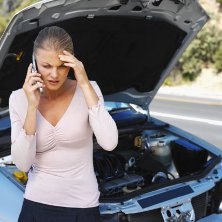 Your radiator hoses carry coolant between your engine and radiator. It’s an important job. If a radiator hose fails, you could lose your engine coolant which might lead to overheating and very expensive engine damage, so you always want to make sure you have good hoses.
Your radiator hoses carry coolant between your engine and radiator. It’s an important job. If a radiator hose fails, you could lose your engine coolant which might lead to overheating and very expensive engine damage, so you always want to make sure you have good hoses.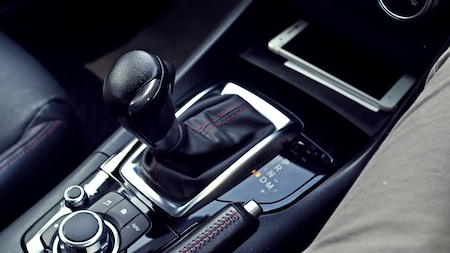 A manual transmission relies on you to operate the clutch and shift as needed.
A manual transmission relies on you to operate the clutch and shift as needed. The rack is linear rather than round. It’s long and flat with prongs on one side. The rack is attached to the steering column by a series of tie rods.
The rack is linear rather than round. It’s long and flat with prongs on one side. The rack is attached to the steering column by a series of tie rods. If you’ve put money into repairing it before small fixes turn into larger problems, it might be worth fixing a few car dings, or even repainting your car. It can make you feel happier when you walk up to your car in the parking lot, and drive it on the city roads. It can even add to the value, becoming something someone else wants to drive rather than an eyesore they hide from their friends.
If you’ve put money into repairing it before small fixes turn into larger problems, it might be worth fixing a few car dings, or even repainting your car. It can make you feel happier when you walk up to your car in the parking lot, and drive it on the city roads. It can even add to the value, becoming something someone else wants to drive rather than an eyesore they hide from their friends.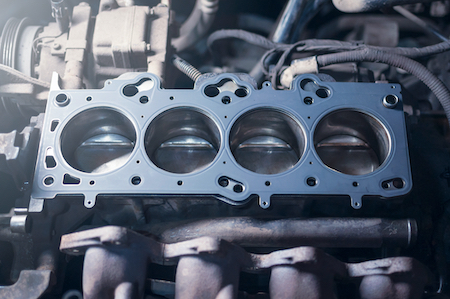 The head gasket has an important job to ensure your vehicle operates smoothly. When your head gasket is blown, it means one or more of these fluids or gases are going where they shouldn’t be.
The head gasket has an important job to ensure your vehicle operates smoothly. When your head gasket is blown, it means one or more of these fluids or gases are going where they shouldn’t be.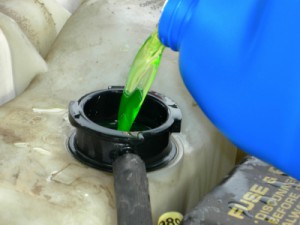 Big advances in automotive technology have led to the development of high-tech fluids to keep pace. A simple example of this is the cooling system. For decades it was primarily made out of iron, steel and rubber hoses. There was one kind of coolant that protected these components from corrosion.
Big advances in automotive technology have led to the development of high-tech fluids to keep pace. A simple example of this is the cooling system. For decades it was primarily made out of iron, steel and rubber hoses. There was one kind of coolant that protected these components from corrosion.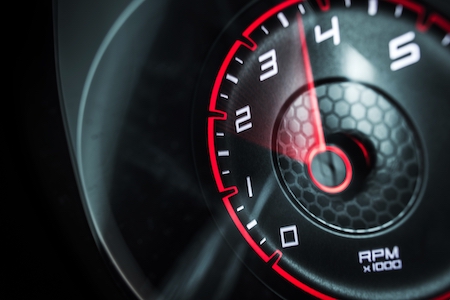 In general, you’ll often see commercials talk about both
In general, you’ll often see commercials talk about both